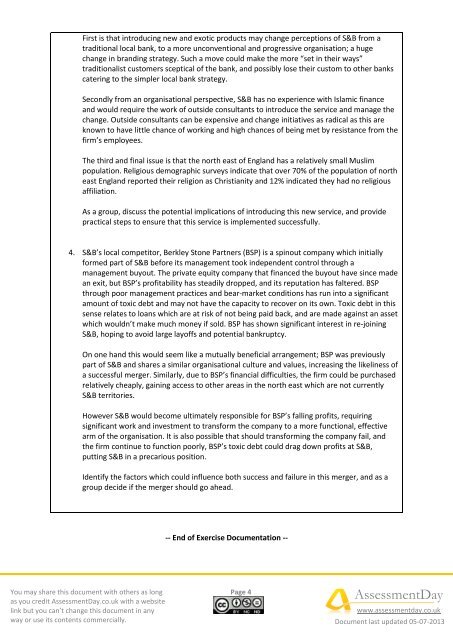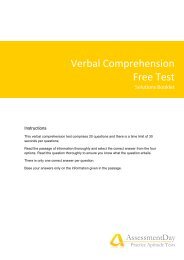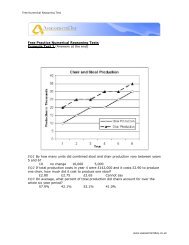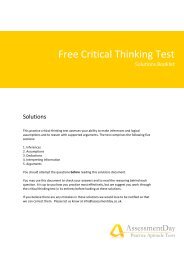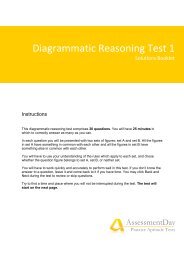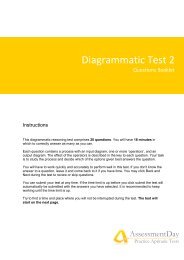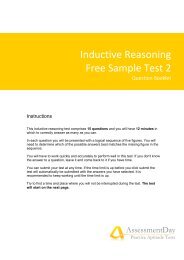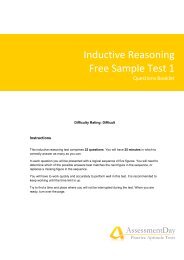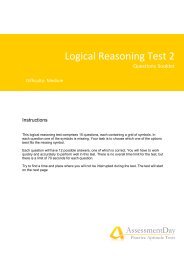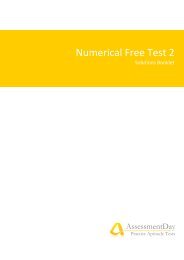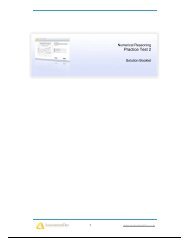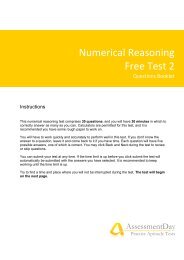Group Exercise Instructions PDF - Aptitude Test
Group Exercise Instructions PDF - Aptitude Test
Group Exercise Instructions PDF - Aptitude Test
You also want an ePaper? Increase the reach of your titles
YUMPU automatically turns print PDFs into web optimized ePapers that Google loves.
First is that introducing new and exotic products may change perceptions of S&B from atraditional local bank, to a more unconventional and progressive organisation; a hugechange in branding strategy. Such a move could make the more “set in their ways”traditionalist customers sceptical of the bank, and possibly lose their custom to other bankscatering to the simpler local bank strategy.Secondly from an organisational perspective, S&B has no experience with Islamic financeand would require the work of outside consultants to introduce the service and manage thechange. Outside consultants can be expensive and change initiatives as radical as this areknown to have little chance of working and high chances of being met by resistance from thefirm’s employees.The third and final issue is that the north east of England has a relatively small Muslimpopulation. Religious demographic surveys indicate that over 70% of the population of northeast England reported their religion as Christianity and 12% indicated they had no religiousaffiliation.As a group, discuss the potential implications of introducing this new service, and providepractical steps to ensure that this service is implemented successfully.4. S&B’s local competitor, Berkley Stone Partners (BSP) is a spinout company which initiallyformed part of S&B before its management took independent control through amanagement buyout. The private equity company that financed the buyout have since madean exit, but BSP’s profitability has steadily dropped, and its reputation has faltered. BSPthrough poor management practices and bear-market conditions has run into a significantamount of toxic debt and may not have the capacity to recover on its own. Toxic debt in thissense relates to loans which are at risk of not being paid back, and are made against an assetwhich wouldn’t make much money if sold. BSP has shown significant interest in re-joiningS&B, hoping to avoid large layoffs and potential bankruptcy.On one hand this would seem like a mutually beneficial arrangement; BSP was previouslypart of S&B and shares a similar organisational culture and values, increasing the likeliness ofa successful merger. Similarly, due to BSP’s financial difficulties, the firm could be purchasedrelatively cheaply, gaining access to other areas in the north east which are not currentlyS&B territories.However S&B would become ultimately responsible for BSP’s falling profits, requiringsignificant work and investment to transform the company to a more functional, effectivearm of the organisation. It is also possible that should transforming the company fail, andthe firm continue to function poorly, BSP’s toxic debt could drag down profits at S&B,putting S&B in a precarious position.Identify the factors which could influence both success and failure in this merger, and as agroup decide if the merger should go ahead.-- End of <strong>Exercise</strong> Documentation --You may share this document with others as longas you credit AssessmentDay.co.uk with a websitelink but you can’t change this document in anyway or use its contents commercially.Page 4AssessmentDaywww.assessmentday.co.ukDocument last updated 05-07-2013


